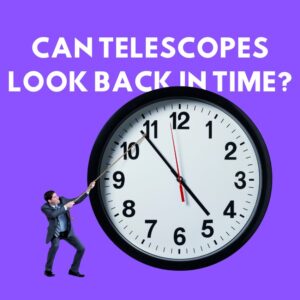This site contains affiliate links to products. I may receive a commission for purchases made through these links.
If you’re like me, you’ve spent countless nights gazing up at the stars, awestruck by the vastness of the universe. Now, imagine sharing that sense of wonder with your kids. That’s where fun astronomy projects and experiments come in handy. They’re a fantastic way to ignite a child’s curiosity about the cosmos while providing a hands-on learning experience.
Astronomy Basics for Kids
Unraveling the mysteries of the universe can be an exciting journey, especially for young minds. Astronomy, the scientific study of celestial objects, space, and the physical universe, offers endless opportunities to engage children and pique their interest.
To kick start the fascinating journey into astronomy, we’ll first take a peek at the basic concepts. Now, don’t be worried it’s not as complex as it might sound. In fact, understanding these simple ideas can make exploring space with kids a remarkable experience.
Starting with the most basic unit – the solar system. Made up of eight planets, countless asteroids, comets and cosmic dust, our solar system is just one tiny part of the Milky Way galaxy. Let’s delve a little deeper:
| Planet | Position from the Sun |
|---|---|
| Mercury | 1st |
| Venus | 2nd |
| Earth | 3rd |
| Mars | 4th |
| Jupiter | 5th |
| Saturn | 6th |
| Uranus | 7th |
| Neptune | 8th |
Quick fun project: Engage your kids in an activity where they create a model of the solar system. This will help them understand the structure and position of each planet in relation to the Sun.
Next, we talk about stars, those twinkling little dots we see in the night sky. They’re not all the same: they vary in size, color, temperature, and age. And yes, the Sun is a star too!
Finally, we delve into the concept of galaxies. A galaxy is a vast system filled with stars, dust and gases. Our solar system is part of the Milky Way galaxy, which is one among billions. It’ll fascinate kids to learn and understand our humble spot in this vast universe.
Teaching children about these basics will give them the foundational knowledge they need to further explore. In our next section, we’ll look at some simple and fun experiments that can help them check out these concepts in action.
DIY Constellation Viewer
Now that we’ve delved into the basics of the solar system and crafted our own miniature versions, it’s time to reach for the stars. Creating a DIY constellation viewer is a great way to get kids starstruck about astronomy. This project not only visually captivates them but also imparts knowledge about various constellations.
To make a DIY constellation viewer, you’ll need:
- A cardboard tube (e.g., from a roll of paper towels)
- Black construction paper
- White paint or chalk
- A pin or skewer
To start, cut a circle from the black paper that’s the same size as the end of your cardboard tube. Using your white paint or chalk, draw dots to represent the stars of a particular constellation. You might want to use familiar constellations like Orion or the Big Dipper, especially if you’re working with younger kids. Then use your pin or skewer to puncture the paper at each star’s location.
Next, attach the black paper to the end of your cardboard tube. You now have your very own constellation viewer. When you peep through the tube, you’ll see your chosen constellation. Adding different constellation discs can make this project with versatile options, which helps to keep children’s interest piqued.
Now let’s move onto an experiment that further deepens understanding of celestial bodies’ movements. We’ll explore what causes day and night, and seasons on Earth, with a fun, hands-on demonstration. Thus, aiding in children’s understanding that the principles of astronomy are always at work, even in their everyday lives.
Build Your Own Rocket
Our journey through the stars isn’t complete without a thrilling touch of rocket science. Let me guide you on how to Build Your Own Rocket with household materials. This experiment is not only fun, but also gives an overview of how rockets work. Remember, safety first! Always engage an adult when performing these experiments.
To start, you’ll need the following:
- A film canister with a tight lid. An empty, clean Alka-Seltzer tube works great.
- Effervescent tablets like Alka-Seltzer.
- Water
- Thoroughly clean your canister.
- Fill it about 1/3 with water.
- Quickly drop in half an effervescent tablet.
- Immediately snap on the lid and place the canister lid-side down.
- Step back and watch your rocket blast off!
The pressure build-up from the gas released by the tablets pushes the canister into the air, demonstrating Newton’s third law of motion – for every action, there is an equal and opposite reaction. It’s exactly how a real rocket works!
You’re clear on making your own rocket, it’s time to see how far you can launch it! You can even decorate it and have a competition with your friends to see whose rocket gets to the moon first.
Solar System Mobile
Taking a step beyond individual stars and rockets, let’s now delve into one of the most engaging and educational DIY projects – creating a solar system mobile. This hands-on activity not only piques children’s interest in the sky above but also gives them a tangible sense of our place in the universe. Nothing like having your very own solar system, right at your fingertips!
So, how do we proceed? You’ll need some basic materials like colored paper or styrofoam balls, string, coat hanger or a hoop, and some paint. Intrigued much?
First things first, mark each ball or paper with the name of a planet. Take note though: the sizes should be proportional to showcase the vast differences among our celestial neighbors. While your smallest sphere (like a pea) will represent Mercury, your biggest (maybe a softball) stands for the gas giant – Jupiter.
Now that you’ve got your planets, it’s time to place them in their orbits. Tie each sphere with a string and attach it to the hanger or hoop based on the distance from the Sun, in sequence. Allow a bit of creativity here – your mobile doesn’t need to be 100% accurate. Remember, the idea is to learn and have fun.
Once done, hang your creation from the ceiling, turn off the lights, and use a flashlight to mimic the sun’s rays. Watch how the light hits each planet and the effect it has – it’s truly a spectacle.
Homemade Telescope
Another hands-on project we need to discuss is the Homemade Telescope. It’s a staple of childhood experimentation and an exceptional avenue for kids to get up close and personal with the stars. Throughout this creative activity, youngsters learn the fundamental mechanics behind how telescopes function. At the same time, they have a tool that puts the universe within their reach.
First off, gathering the necessary materials is key. Here’s what’s needed to start:
- A small and a large clear plastic container, with the latter sizeable enough to slide over the former.
- Some clear plastic wrap and rubber bands (to secure the wrap).
- A lens, which could be an old pair of reading glasses cut to size. If this isn’t available, a magnifying glass would do.
Once the materials are ready, it’s time to start the construction. The bulk of this project is focused on assembling the telescope’s body and affixing the lenses. The smaller plastic container serves as the eyepiece: secure a lens to one end using the rubber band. The larger container then slides over the smaller, forming the telescope’s main body. The second lens goes at the opposing end, fixed with a plastic wrap and rubber band.
Final assembly may involve some adjustments to lens positioning until the ideal focus is achieved. The beauty of this DIY telescope lies in the fact that the project can also instill a sense of accomplishment and pride in the kids.
It’s important to note that this DIY telescope won’t compete with the sophisticated models on the market. However, what matters most is the experience and the hands-on learning it provides. It’s the practical application of the knowledge gained that makes these activities worthwhile.
Conclusion
So there you have it! We’ve explored the exciting world of astronomy through fun and educational DIY projects like making a homemade telescope. It’s not just about the end product – the real value lies in the hands-on learning experience. As kids work on these projects, they’re not only getting a closer look at the stars but also gaining a deeper understanding of how telescopes work. While a DIY telescope might not match up to a professional one, it’s a great starting point. It sparks curiosity and fosters a love for learning. So, let’s keep encouraging our young astronomers, fostering their curiosity and helping them reach for the stars, one DIY project at a time.



